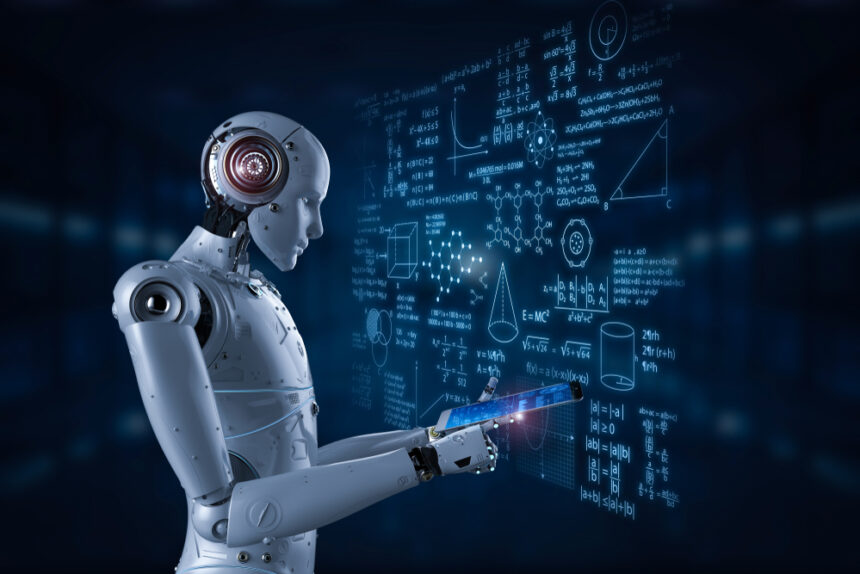The rapid growth of artificial intelligence is reshaping industries, economies, and even our daily lives. From natural language systems that generate human-like conversations to computer vision that enables autonomous vehicles, AI has become the defining technology of our time.
Yet behind the excitement lies an uncomfortable truth the energy demands of AI are rising at a pace that is beginning to alarm scientists, policymakers, and environmental advocates.
The question now being asked in research labs, data centers, and boardrooms is whether AI can be part of the solution to its own problem.
In other words, can Machine Learning the very technique that fuels today’s AI revolution also help reduce the enormous energy costs that come with training and deploying these models?
The Hidden Energy Appetite of AI
When people talk about artificial intelligence, they often focus on its potential to create new efficiencies, speed up processes, and open doors to creative possibilities. What is less often discussed is the environmental cost of those capabilities.
The data centers that power AI systems require enormous amounts of electricity to keep servers running, GPUs processing, and cooling systems operating at safe temperatures.
According to the International Energy Agency, the global demand for electricity from data centers is expected to more than double by 2030, with AI acting as one of the primary drivers of this surge.
To put that into perspective, by the end of this decade, the power used just to sustain AI workloads could match the current electricity consumption of entire nations, such as Japan.
The scale of the problem becomes even clearer when looking at individual AI models. Training a large language model involves processing billions of parameters across countless iterations.
Each run requires extensive GPU usage, which consumes significant power and generates heat that itself requires additional cooling. Researchers estimate that training a single state-of-the-art AI model can produce emissions comparable to those of several cars over their lifetimes.
This reality challenges the notion that digital innovation is inherently clean or weightless. On the contrary, AI is leaving behind a substantial carbon footprint.
Machine Learning as Both the Culprit and the Cure
The irony is that the very discipline responsible for driving up energy demand Machine Learning is also uniquely suited to address the challenge.
The reason is straightforward: Machine Learning thrives in optimization tasks. Whether predicting weather patterns, optimizing logistics networks, or improving speech recognition, ML excels at finding patterns and efficiencies within vast datasets.
When applied to energy use in data centers or the structure of AI training itself, ML can become a tool for sustainability rather than a source of depletion.
Take, for example, the concept of power capping. Rather than allowing GPUs and CPUs to run at full throttle, consuming every watt of electricity they are capable of drawing, researchers have experimented with limiting their maximum energy use.
Surprisingly, the performance loss is often negligible compared to the savings in electricity and cooling costs.
At MIT’s Lincoln Laboratory, such experiments demonstrated reductions in energy consumption and operating temperatures of up to twenty percent, simply by controlling how much power hardware components were allowed to consume. This is AI learning to temper its own appetite.
Another promising avenue lies in modifying the way models are trained. Traditionally, developers push models through endless training cycles to reach maximum accuracy.
However, Machine Learning research shows that many models achieve near-optimal performance long before training completes.
By forecasting the point at which a model’s performance gains level off, training can be stopped early, saving enormous amounts of energy.
This method, sometimes called early stopping, prevents wasteful compute cycles and highlights how AI can make itself more efficient simply by learning when enough is enough.
AI Optimizing the Energy World Beyond Itself
While much of the focus rests on making AI less power-hungry, there is another side to the story. AI is not just a consumer of energy; it is increasingly a partner in transforming the broader energy system.
Machine Learning algorithms are now being applied to renewable energy integration, where they help predict solar and wind outputs with greater accuracy.
By anticipating fluctuations in renewable generation, AI systems allow grid operators to balance supply and demand more efficiently, reducing the need for carbon-intensive backup sources.
In some cases, AI has been shown to improve grid stability while lowering emissions by as much as fifty percent. Companies and research institutes are already exploring how real-time optimization driven by Machine Learning can make clean energy both more reliable and more affordable.
This dual role AI as both a challenge to energy sustainability and a solution to broader climate goals creates a dynamic tension that will define the future of the technology.
The Importance of Multidisciplinary Collaboration
It is tempting to believe that technical tweaks alone will solve AI’s energy problem. Yet, experts argue that the challenge is too complex for technology alone.
Universities like Carnegie Mellon emphasize that addressing the energy footprint of AI requires collaboration across disciplines.
Hardware engineers, computer scientists, policymakers, ethicists, and energy experts must all work together to design not just more efficient chips and algorithms, but also fair policies, equitable infrastructure, and transparent reporting systems.
This broader approach is crucial because energy consumption is not only a matter of watts and cooling systemsit is also about who bears the costs.
Without careful planning, energy-hungry AI systems could worsen inequalities, straining electricity supplies in vulnerable regions or raising costs for communities already facing energy insecurity.
Multidisciplinary research encourages a holistic view that places sustainability and equity at the center of AI’s growth.
Practical Implications for Developers and Users
For developers working with Machine Learning, this conversation translates into everyday decisions about how models are trained and deployed.
By integrating early stopping into their workflows, developers can drastically reduce training times while maintaining high-quality results. Similarly, they can make deliberate choices about the platforms and hardware they use, favoring those optimized for energy efficiency.
Cloud providers increasingly publish information about their renewable energy commitments, and choosing greener providers can significantly cut the hidden emissions tied to AI projects.
For everyday users of AI applications, the picture looks different but no less important. Choosing services and products from companies that prioritize sustainable AI practices can help shift the industry toward responsibility.
Supporting open discussions around the carbon footprint of AI, advocating for policy frameworks that require transparency, and engaging with organizations working at the intersection of technology and sustainability are all ways individuals can make an impact.
In short, energy efficiency in AI is not only a problem for engineers—it is a societal issue that calls for awareness and participation at every level.
Rethinking the Future of Responsible AI
The ultimate question is whether AI will grow into a technology that deepens the global energy crisis or whether it will evolve into a tool that contributes to solving it.
The answer depends on choices being made right now choices about how research is funded, how companies prioritize efficiency, how governments regulate, and how users engage with technology.
The solutions exist, from power capping and early stopping to renewable integration and cross-disciplinary planning. What is needed is the will to apply them consistently and transparently.
Responsible AI is not only about eliminating bias or protecting privacy. It also means ensuring that the systems we build are sustainable for the planet.
AI and Machine Learning have the capacity to make themselves greener and to accelerate humanity’s transition to clean energy systems. Whether they will fulfill that promise depends on how seriously we take the challenge today.
Conclusion
So, can AI solve its own energy problem with Machine Learning? The answer is cautiously optimistic. By leveraging its own optimization capabilities, AI can reduce its training demands, manage its hardware usage more intelligently, and contribute directly to the stability of renewable energy grids.
But the path forward is not automaticit requires deliberate action, transparency, and collaboration across technical, political, and social domains.
For readers, the takeaway is simple yet powerful. As developers, you can embed efficiency directly into your code and workflows. As consumers, you can demand sustainable practices from the services you use. And as citizens, you can support policies and initiatives that hold technology accountable to both people and the planet.
In this way, every choice contributes to a future where AI is not only powerful but also responsible, capable of sustaining itself without draining the world around it.
References:








